
I find it rather problematic to fashion a semblance of a concrete structure from the conundrum that is Karachi’s metropolis. The metropolis I speak of comprises not of sky-scrapers and high-rise buildings that brush against the clouds and billboards lit with neon lights. On the contrary, the metropolis that harbours the heart of Pakistan lives and breathes, just like you and I. She breathes with the quivering, ragged gasps of an invalid. She inhales mouthfuls of air contaminated by generations of ignorance and growing dissent, and punctuated by the overpowering stench of rotting human remains. The city that once stood as the jewel in the crown of a nascent country – a beacon of hope, of growth, of a united mass of young men and women dissolving the divisions of ethnicity, caste, and creed for the purpose of striving towards building the foundations of a nation – now gazes at the smog filled sky in despair, watches the blurry outlines of the setting sun sink into the blue sea and braces herself for showers of bullets and rivers of blood. This piece shall be based upon patterns of identity and discourse within Karachi, how these patterns have evolved over the course of the past few years with respect to Karachi’s rapidly burgeoning and vastly diverse demographic and why, amidst clouds of chaos and escalating civil strife, Karachiites find themselves struggling to identify themselves as citizens of a nation of 180 million individuals. For the sake of simplicity, I shall broadly divide this troubled city not along a geographical context but along the lines of the paths and rifts that have been erected betwixt the city’s burgeoning populace. Mohammad Waseem, in his working paper for the Saban Centre at Brookings titled Patterns of Conflict in Pakistan: Implications for Policy, states that,
“Every fifth household in Pakistan, every fourth in Punjab and Sindh provinces, and more than half in Karachi are ‘migrant’.”By ‘migrant’, Waseem is referring to the Urdu-speaking migrants or the mohajirs from North India that settled primarily in Karachi following Partition. The other half of Karachi’s demographic comprises of a lethal cocktail: a mixture of four different ethnicities, a rallying cry against suppression at the hands of a dominant majority, a far cry from the cosmopolitan melting-pot of cultures and faiths that Karachi once was. An article published by the New York Times in November 2010 for instance, very blatantly claimed that Karachi was Pakistan’s “most deadly place” after its actual war zones. But, the threat Karachi faces is starkly different from the Taliban insurgency being battled by the Pakistani army up north. On the contrary, the article claimed,
“Far more common [in Karachi] have been killing by gangs affiliated with ethnic-based political parties hunting for turf in a city undergoing seismic demographic change.”Three years forward, Karachi’s woes have not dissipated. In a recent press conference, the leader of a Pakhtun political party claimed that leaders of his party were receiving death threats and that “extremist elements” were still operative within Karachi’s Pakhtun-dominated areas. Karachi is a city that struggles to thrive and survive amidst barbed wires and makeshift battlefields littered with shoes and stones and streaks of blood. But, why do Karachiites seem acquiescent of the fact that Karachi will, for time and memoriam, be divided along the lines of cast and ethnicity? I answer this pressing matter of concern via research that I based upon the aim of unearthing the state of mind of the average citizen of Karachi in order to understand and comprehend the divisions that exist betwixt a sample size of eight Karachiites and how these divisions translate to ethno-political rivalries in a larger sphere. My sample size comprised of affluent members of society between the ages of eighteen and twenty one. The reasons behind choosing this particular sample size are two-fold: Karachi’s affluent civil society is a) devoid of the passionate class-based ethnic rivalry that exists amongst members of Karachi’s working classes and is more likely to look upon Karachi’s growing instability and political strife with an objective view and B) responsible for the mass political movement that sprung up before the 2013 General Elections and was geared towards alleviating Karachi from the stronghold demagogic influences. Karachiites struggle to identify themselves as citizens because the problems that plague them on a daily basis are several steps away from those that the rest of Pakistan faces. My sample size unanimously agreed upon a focal factor responsible for Karachi’s woe: Politicisation of the masses, from university based student unions to workers unions to politicised police and law enforcement agencies. The desire for self-fulfilment overpowers the need to recognise and work towards the greater good of society. But what makes Karachi significantly different? The overwhelming difference between the proportions of people involved directly into politics and the common citizenry that is influenced into pledging allegiance. In order to reinforce my claim, I spoke to Chambeli*, a Hindu resident of Karachi’s Shireen Jinnah Colony, who very vociferously claimed that political workers showed up during Diwali and Holi festivities close to elections in order to win hearts and minds and votes. And although every five years, members of predominant parties have promised and pledged to provide water and sanitation to members of the locality, their words are always in vain. Most of Chambelis’ family and friends have stopped exercising their right to vote because they claim that political workers “can speak but can’t act upon their words”. I shall close this article not with a fervent repetition of what has been said time and time again, but with a journey. Bus M4 travels from Hyderi to North Nazimabad to Gurumandir to Shahra-e-Faisal’s wide boulevard to Defence’s repertoire of bungalows and neat picket fences and perfectly manicured gardens. It stops at rickety excuses for bus stands, weaving through honking cars and bumper-to-bumper traffic, picks-up the maid that toils away in House 23/A each day, the factory worker, the clerk, the young student with the unkempt hair and the furrowed brow, the mochi with calloused fingers and clothes that smell faintly of leather, the mother whose laden with groceries bought from Sabzi Mandi and carries a young child in the crook of her arm, the poet lost in thoughts that float back to a time of idyll and peace and harmony. The bus stops at its final destination and the passengers disembark – the maid, the factory worker, the student, the mochi, the mother and her child, the poet – and turn their frenzied eyes towards the horizon. In the backdrop of the setting sun casting rays of gold across the clear sky, they assimilate with the masses. They let their feet sink into the soft sand as the roaring waves crash against their forms and they sway, only to be held firmly by those behind them. A binding, strengthening chain of humans. And in that moment, the disparities that threaten to overpower and separate Karachi into a million fragments fade away. *Names have been changed to protect the identity of people interviewed.






 Around nine o’clock she heard several gunshots followed by heart wrenching howls.
As she walked out of her house to find out what was going on, she was informed by her domestic help that CBC had gone off on their shooting spree again. One dog was found dead while another was thoroughly injured, hiding under the thorns writhing in pain. Without wasting any time she called the
Around nine o’clock she heard several gunshots followed by heart wrenching howls.
As she walked out of her house to find out what was going on, she was informed by her domestic help that CBC had gone off on their shooting spree again. One dog was found dead while another was thoroughly injured, hiding under the thorns writhing in pain. Without wasting any time she called the  When complaints are lodged,
When complaints are lodged,  To begin with, if the government has enough funds to build a Disneyland in Lahore, how about investing in something that’s actually worthwhile? Like nurturing these strays? Fine, take them down if they’re seriously unwell but instead of shooting them point-blank, why isn’t medication use to reduce their pain? Bury them after in a respectable way instead of shooting them in front of their pups and then leaving them there to die? Why not help fund the very few
To begin with, if the government has enough funds to build a Disneyland in Lahore, how about investing in something that’s actually worthwhile? Like nurturing these strays? Fine, take them down if they’re seriously unwell but instead of shooting them point-blank, why isn’t medication use to reduce their pain? Bury them after in a respectable way instead of shooting them in front of their pups and then leaving them there to die? Why not help fund the very few 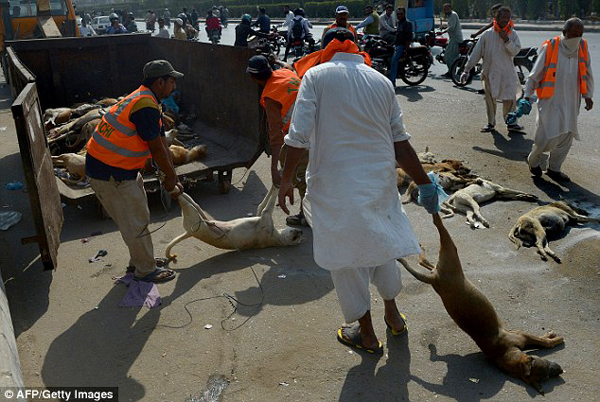 It doesn’t take a rocket scientist to understand that these acts are, in reality, completely heinous. The conductors of these acts will never understand how it feels to be this vulnerable and to be taken advantage of that vulnerability. This is a plea to
It doesn’t take a rocket scientist to understand that these acts are, in reality, completely heinous. The conductors of these acts will never understand how it feels to be this vulnerable and to be taken advantage of that vulnerability. This is a plea to 
 Remember, a child lost is a child lost, whether he is holding the gun or being held at the gun point.
This isn’t just another issue; this is a serious issue which our government needs to look into. The way street crime is tackled has become a joke. We appreciate the operation taking place in Karachi, but this happened today. How effective was the operation then?
What is sad that our reaction to a friend’s mugging has become a joke too,
Remember, a child lost is a child lost, whether he is holding the gun or being held at the gun point.
This isn’t just another issue; this is a serious issue which our government needs to look into. The way street crime is tackled has become a joke. We appreciate the operation taking place in Karachi, but this happened today. How effective was the operation then?
What is sad that our reaction to a friend’s mugging has become a joke too,








































 Not surprisingly, the authorities haven’t been moved by these horrible crashes. At the very least the government should run awareness campaigns across television and newspapers to educate drivers. At the same time, our police needs to be more vigilant. Then again, what can we expect from an organisation that hands out driving licenses to anyone with a few thousand rupees in their pocket?
Drive safe. For yourself. For your family. For those around you.
All photos are screenshots from Halaat Updates Facebook page.
Not surprisingly, the authorities haven’t been moved by these horrible crashes. At the very least the government should run awareness campaigns across television and newspapers to educate drivers. At the same time, our police needs to be more vigilant. Then again, what can we expect from an organisation that hands out driving licenses to anyone with a few thousand rupees in their pocket?
Drive safe. For yourself. For your family. For those around you.
All photos are screenshots from Halaat Updates Facebook page.
 Photo: AP[/caption]
However, as the sun rose 10 days later, so did a new feeling of hope amongst most cricket lovers in the country, as PCB named
Photo: AP[/caption]
However, as the sun rose 10 days later, so did a new feeling of hope amongst most cricket lovers in the country, as PCB named  Photo: AP[/caption]
After seeing him perform with the bat, the then head coach, Waqar Younis, tried him as an opener
Photo: AP[/caption]
After seeing him perform with the bat, the then head coach, Waqar Younis, tried him as an opener  Photo: PSL[/caption]
All in all, there is a lot to be excited about when thinking about the prospect of this little fellow leading our team green in the shortest format of the game.
But, is he the
Photo: PSL[/caption]
All in all, there is a lot to be excited about when thinking about the prospect of this little fellow leading our team green in the shortest format of the game.
But, is he the 

 Her extra efforts paid off. Shamim excelled at school; her curiosity was insatiable.[/caption]
Once she completed eighth grade, however, she became despondent, knowing this would be the end of her education. The local high school was five kilometres away and while it wasn’t a problem for boys because they had bicycles and other means of transportation, her father wasn’t about to allow his daughter to make the trek on her own. Even if she were posing as a boy.
Her extra efforts paid off. Shamim excelled at school; her curiosity was insatiable.[/caption]
Once she completed eighth grade, however, she became despondent, knowing this would be the end of her education. The local high school was five kilometres away and while it wasn’t a problem for boys because they had bicycles and other means of transportation, her father wasn’t about to allow his daughter to make the trek on her own. Even if she were posing as a boy.
 Everyone in her village was aware of her secret, and it had become a contentious issue among some of the influential men. “They didn’t like that there was a girl doing better than their sons,” she said.[/caption]
The only reason Shamim was interested in changing back into a woman was to attend college in the nearby city of Mirpur Khas. The school had a hostel for girls and she could finish 11th and 12th grades there if she could get her father’s permission. She asked, but he said no. Shamim didn’t give up easily. Instead, she went on strike for three days and convinced her father to let her go. Two years later, when the time came to go to university, she knew getting his consent would be a tougher sell. Her father had turned his attention to her younger brothers, who could go to school, secure jobs and help support the family, while, as a woman, her place was ultimately at home.
Shamim didn’t press her luck, but she also didn’t plan to return home. Instead she signed up for a two-year program to become a female health visitor. It wasn’t university, but she could keep learning and get paid. While she was working in the city’s different hospitals, she came to learn about the
Everyone in her village was aware of her secret, and it had become a contentious issue among some of the influential men. “They didn’t like that there was a girl doing better than their sons,” she said.[/caption]
The only reason Shamim was interested in changing back into a woman was to attend college in the nearby city of Mirpur Khas. The school had a hostel for girls and she could finish 11th and 12th grades there if she could get her father’s permission. She asked, but he said no. Shamim didn’t give up easily. Instead, she went on strike for three days and convinced her father to let her go. Two years later, when the time came to go to university, she knew getting his consent would be a tougher sell. Her father had turned his attention to her younger brothers, who could go to school, secure jobs and help support the family, while, as a woman, her place was ultimately at home.
Shamim didn’t press her luck, but she also didn’t plan to return home. Instead she signed up for a two-year program to become a female health visitor. It wasn’t university, but she could keep learning and get paid. While she was working in the city’s different hospitals, she came to learn about the  “It became more than just a job for me, it became my passion,” Shamim said.[/caption]
After a few years, Shamim felt bounded by what she could accomplish at TRDP, but back home she was beginning to have a real impact. As friends and neighbours saw her flourishing and sending money home to her parents, they started to understand the importance of education and Shamim soon became a role model. Over time, parents began sending their daughters to school, a road was built to Mirpur Khas, making access easier and acceptable for young women to attend college and her father’s friends would call on Shamim to help their sons find work at non-profits.
Her parents were proud, but they were still not completely comfortable with her being on her own so far away. Around 2014, they wanted her to find a government job closer to home so, when they heard about an opening for a teacher in a nearby school, they applied on her behalf. She wasn’t happy, but they made a deal. She would take the test and if she passed, the decision would be up to her. She got the job, but she was torn. She was happy at TRDP, but also knew change was needed in nearby villages.
In that same year, Shamim had applied and been selected as a
“It became more than just a job for me, it became my passion,” Shamim said.[/caption]
After a few years, Shamim felt bounded by what she could accomplish at TRDP, but back home she was beginning to have a real impact. As friends and neighbours saw her flourishing and sending money home to her parents, they started to understand the importance of education and Shamim soon became a role model. Over time, parents began sending their daughters to school, a road was built to Mirpur Khas, making access easier and acceptable for young women to attend college and her father’s friends would call on Shamim to help their sons find work at non-profits.
Her parents were proud, but they were still not completely comfortable with her being on her own so far away. Around 2014, they wanted her to find a government job closer to home so, when they heard about an opening for a teacher in a nearby school, they applied on her behalf. She wasn’t happy, but they made a deal. She would take the test and if she passed, the decision would be up to her. She got the job, but she was torn. She was happy at TRDP, but also knew change was needed in nearby villages.
In that same year, Shamim had applied and been selected as a 
 And why was that? Because while the former two plays (and their kind) usually have a humble stage setting and little to no live-singing, Grease gave me entertainment in various tiers.
And why was that? Because while the former two plays (and their kind) usually have a humble stage setting and little to no live-singing, Grease gave me entertainment in various tiers.
 The multiple stage backgrounds (which were swiftly changed in seconds for each scene); the brilliant soundtracks (played by a formidable band) complemented by the spine-tingling live-songs (performed by the actors themselves); the amazing choreography and spot-on acting, everything worked together to create a wholesome and gratifying experience for the audience.
The multiple stage backgrounds (which were swiftly changed in seconds for each scene); the brilliant soundtracks (played by a formidable band) complemented by the spine-tingling live-songs (performed by the actors themselves); the amazing choreography and spot-on acting, everything worked together to create a wholesome and gratifying experience for the audience.
 Being an adaptation of its namesake movie, Grease follows the lives of a few high school students in the 60s who are trying to make sense of their world – one which is garlanded with Elvis Presley’s hits, convertible cars and puffy dresses. This coming-of-age story is filled with some of the most iconic songs ever and they are a treat to listen to every time.
Being an adaptation of its namesake movie, Grease follows the lives of a few high school students in the 60s who are trying to make sense of their world – one which is garlanded with Elvis Presley’s hits, convertible cars and puffy dresses. This coming-of-age story is filled with some of the most iconic songs ever and they are a treat to listen to every time.
 And the theatre adaptation in Karachi did immense justice to it.
And the theatre adaptation in Karachi did immense justice to it.
 Some notable performances which were applauded by everyone include Rizzo (played by
Some notable performances which were applauded by everyone include Rizzo (played by  Along with this, the lighting and panache that accompanied each character, switching aptly with the mood of the story, made the performance better tenfold.
Along with this, the lighting and panache that accompanied each character, switching aptly with the mood of the story, made the performance better tenfold.
 There were some downsides to the performance as well, though. The character of Vince Fontane, for example, did not appeal to me as such and I felt like it could have been performed better. The same goes for the character of Ms Lynch (which, though short, was a performance that left the audience wanting more). Some of the more upbeat, fast-paced songs (such as You’re The One That I Want) had a slower stride to it, which felt a bit off-beat, at least to those who like the original version of the song.
https://www.youtube.com/watch?v=7oKPYe53h78
However, these glitches did not do much to hinder the performance or render it unsuccessful. The flamboyance and blast of music and art that this play offers is paralleled to none other. Grease – The Musical is a sure treat for anyone who is even remotely interested in the performing arts.
There were some downsides to the performance as well, though. The character of Vince Fontane, for example, did not appeal to me as such and I felt like it could have been performed better. The same goes for the character of Ms Lynch (which, though short, was a performance that left the audience wanting more). Some of the more upbeat, fast-paced songs (such as You’re The One That I Want) had a slower stride to it, which felt a bit off-beat, at least to those who like the original version of the song.
https://www.youtube.com/watch?v=7oKPYe53h78
However, these glitches did not do much to hinder the performance or render it unsuccessful. The flamboyance and blast of music and art that this play offers is paralleled to none other. Grease – The Musical is a sure treat for anyone who is even remotely interested in the performing arts.
 For me,
For me,  The play is going through its last week of performances, so if you are a fan of the performing arts, you better get your hands on its passes soon.
All photos: Made for Stage Productions Facebook Page
[poll id="506"]
The play is going through its last week of performances, so if you are a fan of the performing arts, you better get your hands on its passes soon.
All photos: Made for Stage Productions Facebook Page
[poll id="506"]

 "Quetta is like a dry fruit"
"Quetta is like a dry fruit"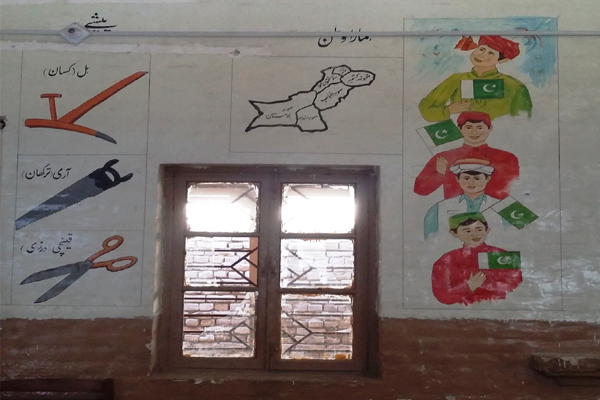 Inside a classroom, Pakistan’s map & people of all four provinces drawn by students
Inside a classroom, Pakistan’s map & people of all four provinces drawn by students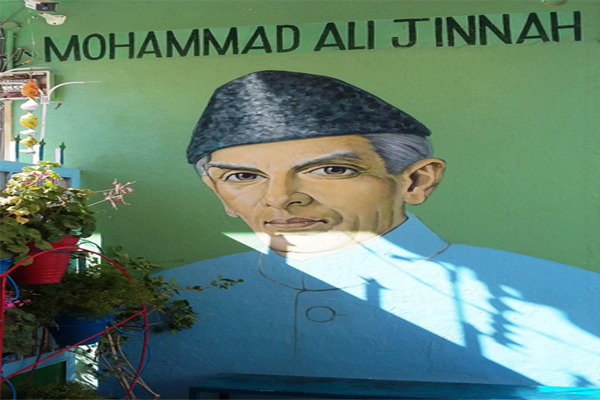 Jinnah painted on the wall of a school in Quetta.
Jinnah painted on the wall of a school in Quetta.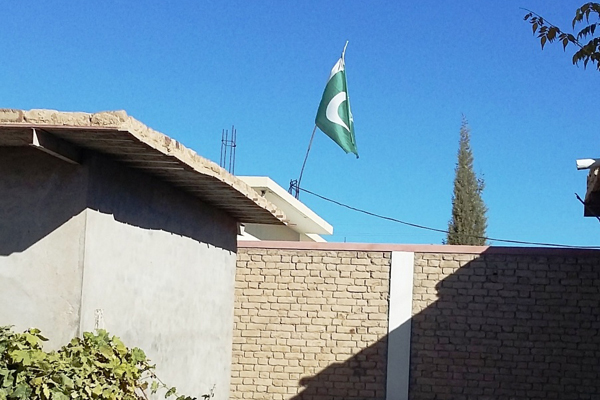 Pakistan flag on a rooftop in Quetta
Pakistan flag on a rooftop in Quetta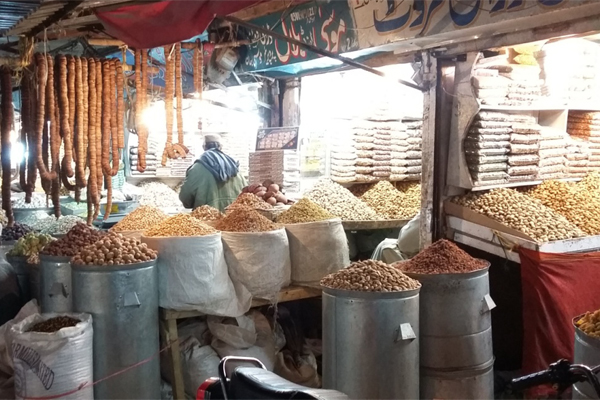 Dry fruit shops in one of the famous markets of Quetta
Dry fruit shops in one of the famous markets of Quetta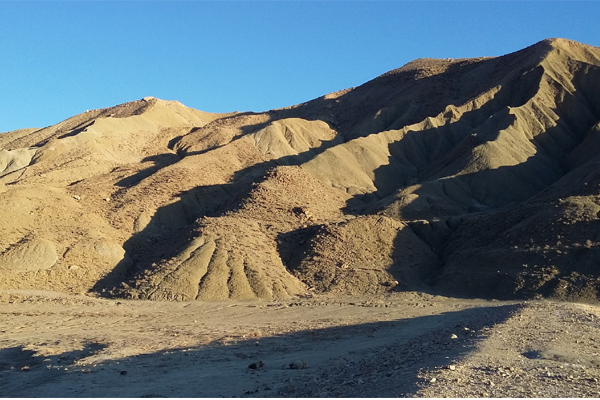 Eerily beautiful
Eerily beautiful

 The day you passed away, I spoke at a room full of Pakistanis in America at Columbia University. Photo: Jibran Nasir[/caption]
[caption id="" align="alignnone" width="600"]
The day you passed away, I spoke at a room full of Pakistanis in America at Columbia University. Photo: Jibran Nasir[/caption]
[caption id="" align="alignnone" width="600"] One by one, members of the audience stood to pay tribute to you. Photo: Jibran Nasir[/caption]
And this is the calamity, our collective misfortune and wretchedness. Little is expected from those who took you away. But many of those who mourn you are also not aware of what we lost when we lost you. Your
One by one, members of the audience stood to pay tribute to you. Photo: Jibran Nasir[/caption]
And this is the calamity, our collective misfortune and wretchedness. Little is expected from those who took you away. But many of those who mourn you are also not aware of what we lost when we lost you. Your 

 Lynne K has been coming to Pakistan teaching this course for 15 plus years. Photo: CPPD[/caption]
2. Your group
The first day I was surrounded by 15 strangers in all shapes and sizes.
Lynne K has been coming to Pakistan teaching this course for 15 plus years. Photo: CPPD[/caption]
2. Your group
The first day I was surrounded by 15 strangers in all shapes and sizes.  Photo: Reuters[/caption]
No less a figure than Steve Jobs
Photo: Reuters[/caption]
No less a figure than Steve Jobs 








